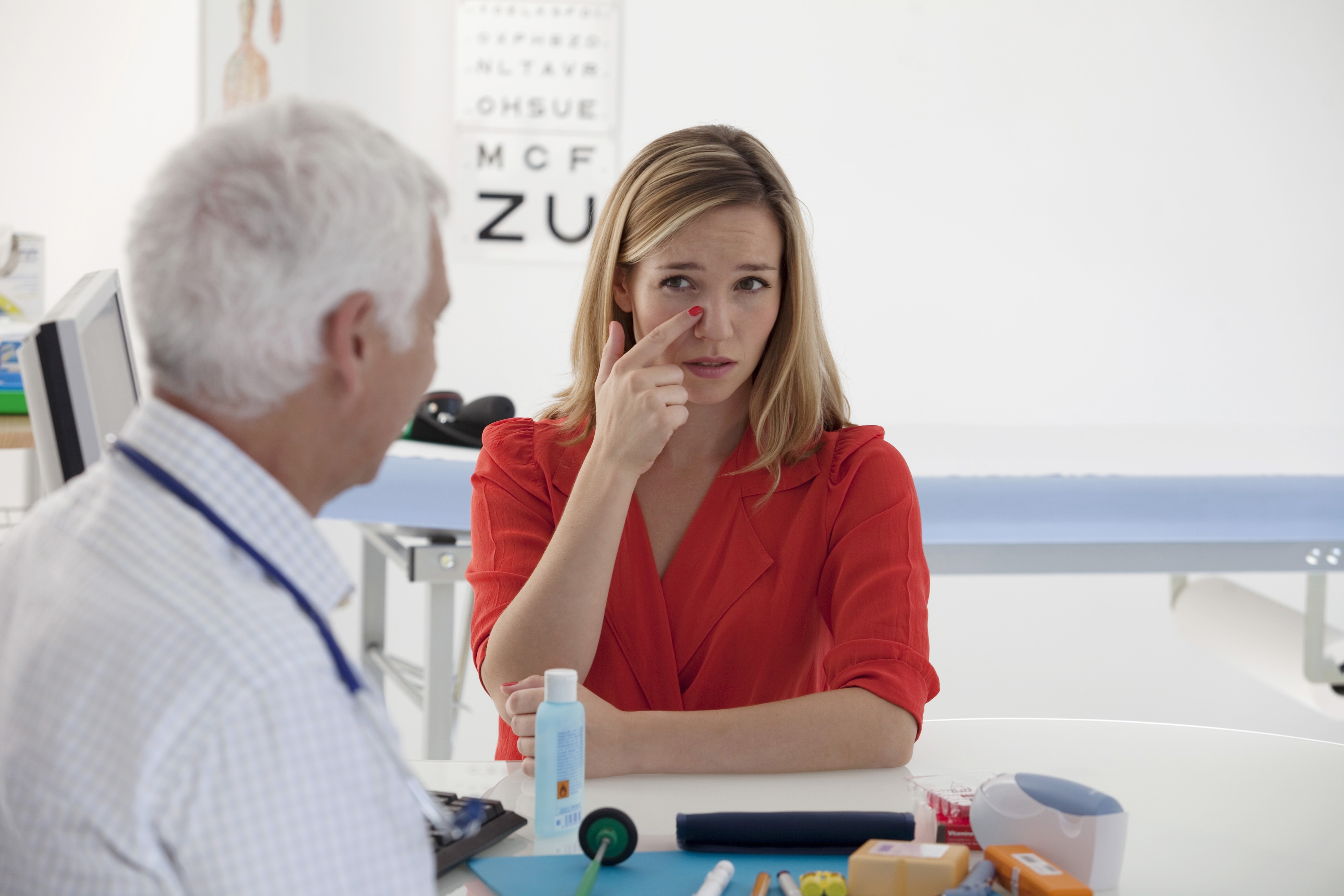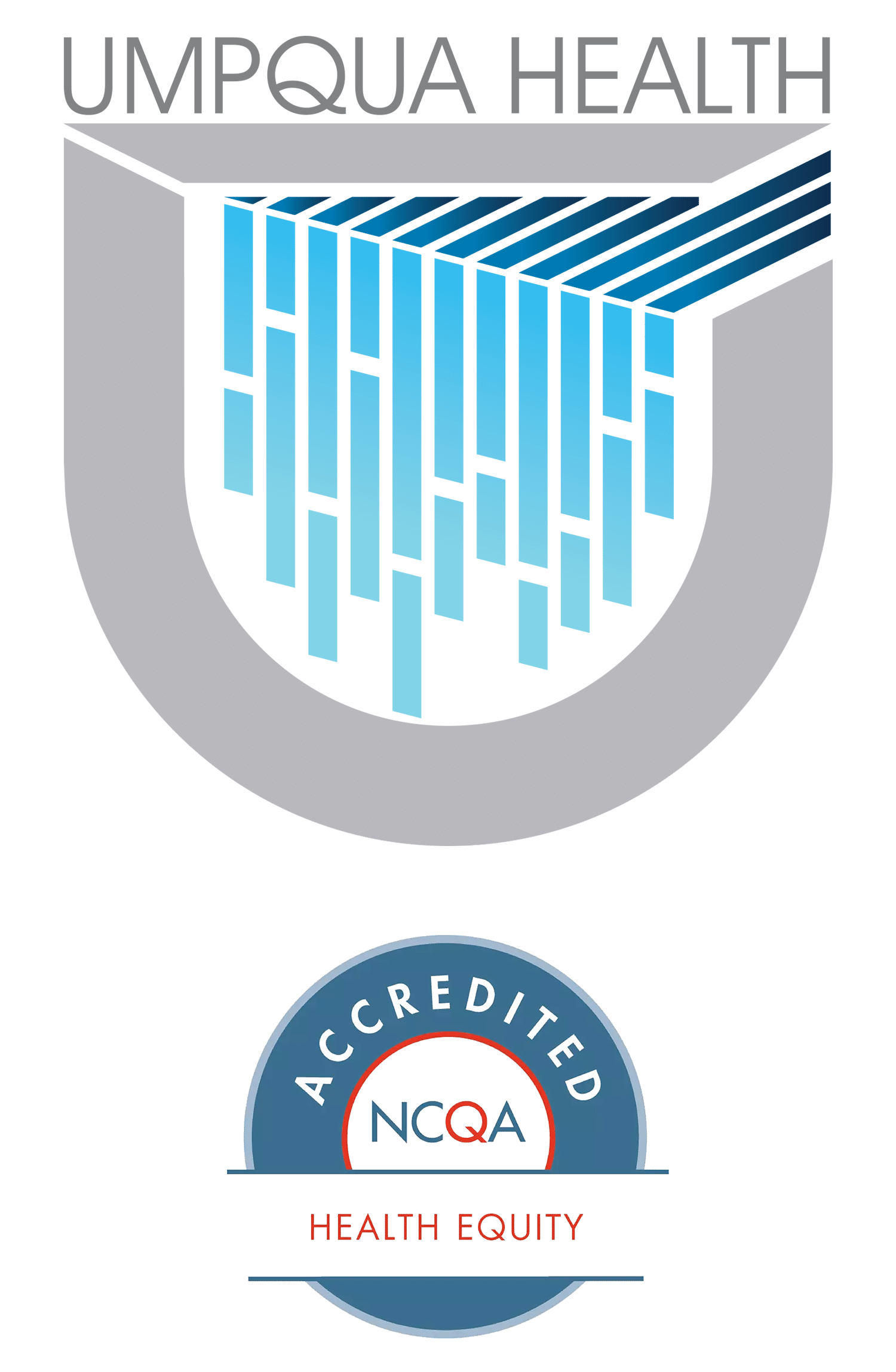Provider Newsletter October 2018
 Practice Tactics
Practice Tactics
Changes to the Prioritized List of Health Services effective 10/1/2018
The Health Evidence Review Commission (HERC) has updated the Prioritized List of Health Services and guideline notes, effective October 1, 2018. Changes include:
- Code changes resulting in 459 new diagnosis/procedure pairs and 714 deleted pairs (mostly due to implementing the 2019 ICD-10-CM code set)
- 5 new guidelines, 18 revised guidelines, and 1 deleted guideline
- 5 new coding specifications
- New statement of intent on the treatment of chronic pain
- Revised statement of intent on palliative care
Umpqua Health Alliance has updated its claim system to reflect these technical changes, effective October 1, 2018.
To learn more, visit the HERC website. A full description of the October 1 changes is available in HERC’s Notification of Interim Changes.
To be informed when HERC announces pending changes to the Prioritized List, sign up for HERC email updates.
Further Clarification: Prior Authorization Process for Dermatology and Podiatry
UHA members seeking Dermatology services require a PA submitted by their PCP. This implies that the PCP has first evaluated the patient and is unable to diagnose and treat this condition without consultation. We will likely approve the first visit if diagnosis is in doubt, but if it is a condition that is not covered by the Oregon Health Plan (“Below the Line” on the Prioritized List), then subsequent visits to the Dermatology specialist may be denied. OHP assumes that common skin conditions will be treated by Primary Care in the course of their holistic care as a PCPCH.
Preventive Foot Care is covered for patients with high risk conditions (Line 165): Diabetes, Peripheral Neuropathy, and Peripheral Artery Disease. It is not covered for routine care without these conditions. Podiatry does not require a PA for E&M codes at this time, but many procedures they perform do require Prior Approval.
 On the Lookout
On the Lookout
Fentanyl Found in Local Drug Supply
Fentanyl is a powerful synthetic opioid analgesic that is similar to morphine but is 50 to 100 times more potent. It is a schedule II prescription drug, and it is typically used to treat patients with severe pain or to manage pain after surgery. It is also sometimes used to treat patients with chronic pain who are physically tolerant to other opioids. In its prescription form, fentanyl is known by such names as Actiq®, Duragesic®, and Sublimaze®. Street names for fentanyl or for fentanyl-laced heroin include Apache, China Girl, China White, Dance Fever, Friend, Goodfella, Jackpot, Murder 8, TNT, and Tango and Cash.
Counties surrounding Douglas County have seen a marked increase in opioid overdoses due to fentanyl laced illicit drug use. In Lane county over a span of less than a week, there were 23 reported overdoses and 2 deaths related to heroin laced with fentanyl. Jackson County issued a warning in late September due to a reported increase in opioid overdoses.
Public health and other community agencies have been aware of the possible presence of fentanyl in Douglas County for quite some time, but previously were unable to state that for certain. The Douglas Public Helath Network and the HIV Alliance instituted a fentanyl testing program in August. DPHN supplies the testing strips and the HIV Alliance offers strips to their syringe exchange clients with the ask to report back any positive results. As of this week, there has been 43 strips distributed and 18 strips reported positive for fentanyl, with the positive results coming from both methamphetamine and heroin.
Officials with DPHN recommend anyone who is using an opioid medically or illicitly, as well as those at risk for opioid exposure through other substances, to carry Naloxone. Naloxone or Narcan (nasal form) is a medication designed to rapidly reverse opioid overdose. It is an opioid antagonist, meaning that it binds to opioid receptors and can reverse and block the effects of other opioids. It can very quickly restore normal respiration to a person whose breathing has slowed or stopped as a result of overdosing with heroin or prescription opioid pain medications. This medication can be obtained through a prescription from a medical provider or a prescription from a pharmacist, with most insurance companies covering all or part of the cost for someone who was prescribed an opioid. It can also be obtained for free through the HIV Alliance at their office at 647 W Luellen Dr. in Roseburg.
DPHN Leads Influenza Vaccination Efforts in Drain and Tri City
Flu season is here. Recent news stories remind us that influenza resulted in a record-breaking 900,000 hospitalizations and 80,000 deaths in the United States last year, more deaths from influenza than any year in the past four decades. Douglas Public Health Network is leading an effort to bring more flu vaccine to communities that typically lack convenient access to it.DPHN will partner with local emergency management and healthcare professionals to hold flu vaccine clinics in Drain on Saturday, November 3rd, and Tri City on November 4th. The flu shots are free. One hundred and fifty doses will be available at each site, the North Douglas Fire & EMS main station in Drain and Tri City Fire Department in Myrtle Creek. These stations will host “drive-through” clinics, where recipients will receive vaccinations while waiting in their vehicles.

Drive-through flu vaccination clinics not only increase the number of people immunized against the flu but provide an opportunity to exercise public health emergency response plans and build valuable community partnerships. Participating this year are North Douglas Fire & EMS, Tri City Rural Fire Department, Douglas County Sheriff’s Office, Douglas County Sheriff’s Office of Emergency Management, Cow Creek Band of the Umpqua Tribe of Indians, Oregon Health Authority, Umpqua Community Health Center, Mercy Medical Center and others. This year’s effort is building on lessons learned from last year’s community drive-through exercise at the fairgrounds.
Oral Health and Halloween
 Halloween is around the corner, which for many children means bags of free candy. According to the American Dental Association, Halloween candy is okay to eat, but it is important to have a plan. These are tips you can share with your patients:
Halloween is around the corner, which for many children means bags of free candy. According to the American Dental Association, Halloween candy is okay to eat, but it is important to have a plan. These are tips you can share with your patients:
Remember
- Sugary snacks are okay occasionally, but when frequently consumed, the risk of tooth decay and cavities increases. Chew sugar-free gum for 20 minutes after meals. It will help increase saliva flow, which helps wash out food and cavity-causing bacteria. Visit the dentist at least twice a year. This will help with cleanings and prevention.
Eat and Drink
- Eat Halloween candy with meals or shortly after mealtime. Saliva production increases during meals, which helps cancel out acids produced by bacteria. Limit what is eaten. The more snacking, the higher chance of having cavities. Drink more water. It will help rinse the candy off teeth. Fluoridated water can help prevent tooth decay. Eat a balanced, healthy diet, and limit between-meal snacks. When children consume too many sugar-filled sodas, sweetened drinks, or non-nutritious snacks, they could be at risk for tooth decay and cavities. Eat a variety of foods from each of the five major food groups including: whole grains, fruits, and vegetables; lean sources of protein such as lean beef, skinless poultry and fish, dry beans, peas and legumes; low-fat and fat-free dairy foods
Brush and Clean
- Brush twice a day for two minutes with a fluoride toothpaste. Replace worn toothbrushes when the bristles become frayed. Clean between teeth. Flossing will help remove plaque and food particles that get stuck between the teeth and under the gum line.
Avoid
- Sugary foods to avoid include: juice, soda, candies, cookies, Gatorade, crackers, dried fruit snacks, and pastries.
 Medical Management
Medical Management
Treatment of Acute Rhinosinusitis
A frequent complication of the common cold, sinusitis is one of the most prevalent problems seen in general medical and emergency department practices. In addition, nosocomial sinus infection, particularly in intensive care units, is being recognized more frequently. Decision making about managing patients with sinusitis is based primarily on the history but too often, while most cases are viral in nature, antibiotics are often incorrectly prescribed. Treatment for acute viral rhinosinusitis (AVRS) focuses on symptomatic management as it typically resolves within 7 to 10 days. Bacterial infection occurs in only 0.5 to 2 percent of episodes of ARS. Acute bacterial rhinosinusitis (ABRS) may also be a self-limited disease. Patients may be treated symptomatically and observed or treated with antibiotics. Rarely, patients with ABRS develop serious complications.
- Acute Viral Rhinosinusitis – Patients with acute viral rhinosinusitis (AVRS) should be managed with supportive care. There are no treatments to shorten the clinical course of the disease.
- Natural history – AVRS may not completely resolve within 10 days but is expected to improve. Patients who fail to improve after ≥10 days of symptomatic management are more likely to have acute bacterial rhinosinusitis (ABRS) and should be managed as ABRS patients.
- Symptomatic therapies – Symptomatic management of acute rhinosinusitis (ARS), both viral and bacterial in etiology, aims to relieve symptoms of nasal obstruction and rhinorrhea as well as the systemic signs and symptoms such as fever and fatigue. When needed, over-the-counter (OTC) analgesics and antipyretics, saline irrigation, and intranasal glucocorticoids are suggested for symptomatic management in patients with ARS.
Other:
- Oral decongestants – Oral decongestants may be useful when eustachian tube dysfunction is a factor for patients with AVRS. These patients may benefit from a short course (three to five days) of oral decongestants. Oral decongestants should be used with caution in patients with cardiovascular disease, hypertension, angle-closure glaucoma, or bladder neck obstruction
- Intranasal decongestants – Intranasal decongestants are often used as symptomatic therapies by patients. These agents, such as oxymetazoline, may provide a subjective sense of improved nasal patency. However, there is no evidence to support their use for ARS
- Antihistamines – Antihistamines are frequently used for symptom relief due to their drying effects; however, there are no studies investigating their efficacy for ARS
- Antibiotics – Antibiotics usually aren’t needed to treat acute sinusitis. Even if your acute sinusitis is bacterial, it may clear up without treatment.
A doctor might wait and watch to see if bacterial acute sinusitis worsens. However, severe, progressive or persistent symptoms might require antibiotics. If the doctor prescribes an antibiotic, it becomes critical to take the whole course, even after the symptoms clear. Cessation of antibiotics early, may cause symptoms to recur.
 Some clinicians start antibiotic therapy after diagnosis for patients who do not have good follow-up. Antibiotics should also be started in patients who have been managed with observation who have worsening symptoms or fail to improve within a seven-day period.
Some clinicians start antibiotic therapy after diagnosis for patients who do not have good follow-up. Antibiotics should also be started in patients who have been managed with observation who have worsening symptoms or fail to improve within a seven-day period.
Treatment decisions for immunocompromised patients should be made on a case-by-case basis. They may warrant immediate antibiotic treatment and/or specialist referral. In addition, treatment decisions for patients with other comorbidities that can affect immune function (eg, diabetes) should be individualized as there are insufficient data to determine which patients will benefit most from early initiation of antibiotics rather than watchful waiting.
Meta-analyses have consistently found that, compared with placebo, patients with ABRS may benefit from antibiotics at the cost of increased adverse events. Estimates of the number needed to treat to benefit range from 13 to 18 patients, while the number needed to harm is approximately 8 patients.
Other meta-analyses have estimated cure or symptom improvement. One meta-analysis found that, compared with placebo, patients treated with antibiotics had a higher cure rate or symptom improvement at 7 to 15 days (odds ratio [OR] 1.64, 95% CI 1.35-2.0), with moderate magnitude of effect at the expense of an increase in adverse effects with antibiotic therapy. Another found that, compared with placebo, antibiotic therapy with penicillin or amoxicillin decreased clinical failure at 7 to 15 days (lack of full recovery or improvement; risk ratio [RR] 0.66, 95% CI 0.47-0.94), but the clinical benefit was small and adverse events were more common with antibiotic treatment.
However, the studies in these meta-analyses have limitations. Many of the studies are likely to have included patients with AVRS as most studies used clinical criteria for diagnosis of ABRS without culture confirmation. Including patients with AVRS would make antibiotics appear less effective for ABRS. Also, studies have not generally distinguished the effectiveness of antibiotics based on symptom severity.
Additionally, comparative studies of antibiotics for the treatment of ABRS are limited as many studies likely include patients with AVRS. The significant rate of spontaneous recovery in studies decreases the ability of studies to differentiate between antibiotics (the apparent response to less-effective antibiotics is greater than would be seen in a more strictly defined ABRS population; conversely, the relative effectiveness of more appropriate antibiotics is diminished).
Summary and Recommendations
- Acute viral rhinosinusitis (AVRS) is expected to improve or resolve within 10 days. Patients with AVRS should be managed with supportive care. Patients who fail to improve after ≥10 days of symptomatic management are more likely to have acute bacterial rhinosinusitis (ABRS) and should be managed as ABRS.
- ABRS may also be a self-limited disease. Systematic reviews and meta-analyses have found that 70 to 80 percent of immunocompetent patients improve within two weeks without antibiotic therapy. We suggest symptomatic management and observation over a seven-day period (watchful waiting) for immunocompetent patients with ABRS who have good follow-up (Grade 2B). We start antibiotic therapy after diagnosis for patients who do not have good follow-up.
- Urgent, early referral is essential for patients with symptoms that are concerning for complicated ABRS or have evidence of complications on imaging.
- Symptomatic management of acute rhinosinusitis (ARS) aims to relieve symptoms of nasal obstruction and rhinorrhea. We suggest over-the-counter (OTC) analgesics and saline nasal irrigation (Grade 2C). We suggest treatment with intranasal glucocorticoids (Grade 2B). Decongestants may be useful when eustachian tube dysfunction is a factor for patients with AVRS but are not likely to be helpful for patients with ABRS and have adverse side effects.
Antibiotics should be started in patients who have been managed with observation who have worsening symptoms or fail to improve within the seven-day observation.
There are also a variety of reasons for patients to have a suppressed immune system, and treatment decisions for immunocompromised patients should be made on a case-by-case basis. They may warrant immediate antibiotic treatment and/or specialist referral. Treatment decisions for patients with other comorbidities that can affect immune function (eg, diabetes) should also be individualized.
- In 2014, 266.1 million courses of antibiotics are dispensed to outpatients in U.S. community pharmacies. This equates to more than 5 prescriptions written each year for every 6 people in the United States.
- At least 30% of antibiotics prescribed in the outpatient setting are unnecessary, meaning that no antibiotic was needed at all.
- Total inappropriate antibiotic use, inclusive of unnecessary use and inappropriate selection, dosing and duration, may approach 50% of all outpatient antibiotic use.
- Antibiotic prescribing in the outpatient setting varies by state.
- Performance on quality measures for appropriate outpatient antibiotic prescribing varies both by region and health plan.
- Local outpatient prescribing practices contribute to local resistance patterns.
- Outpatient antibiotic prescribing is greatest in the winter months.
- The majority (>60%) of antibiotic expenditures are associated with the outpatient setting.
- An estimated 80-90% of the volume of human antibiotic use occurs in the outpatient setting
- Azithromycin and amoxicillin are among the most commonly prescribed antibiotics.
Appropriateness of Outpatient Antibiotic Prescribing
 Appropriate antibiotic prescribing means antibiotics are only prescribed when needed, and when needed, the right antibiotic is selected and prescribed at the right dose and for the right duration. Appropriate antibiotic prescribing should be in accordance with evidence-based national and local clinical practice guidelines, when available.
Appropriate antibiotic prescribing means antibiotics are only prescribed when needed, and when needed, the right antibiotic is selected and prescribed at the right dose and for the right duration. Appropriate antibiotic prescribing should be in accordance with evidence-based national and local clinical practice guidelines, when available.
Inappropriate antibiotic prescribing includes unnecessary prescribing of antibiotics and also when an antibiotic is needed but the wrong antibiotic is prescribed (inappropriate selection) or the wrong dose is given or the antibiotic is prescribed for the wrong length of time. CDC estimates that at least 30% of antibiotics prescribed in the outpatient setting are unnecessary, meaning that no antibiotic was needed at all. Total inappropriate antibiotic use, inclusive of unnecessary use and inappropriate selection, dosing and duration, may approach 50% of all outpatient antibiotic use.
To view an algorithm to guide therapy for acute sinusitis, click here.
CME for Thee
| Event | Registration/Contact | Linked to Metrics | Date |
|---|---|---|---|
|
Webinar with CMEs – Improving Follow-up to Developmental Screening: Best Practices for Primary Care Providers. The OHA Transformation Center is offering TA to CCOs and their contracted primary care providers on increasing rates of developmental screening (CCO incentive metric) and effective follow-up (referrals and connection to supportive services for children when indicated by developmental screening results). The Oregon Pediatric Improvement Partnership will present this webinar for primary care providers. At the conclusion of this activity participants will understand:
Audience: Primary care providers and practices CME Credit: Oregon Health & Science University School of Medicine designates this live activity for a maximum of 1.0 AMA PRA Category 1 Credits™. Physicians should claim only the credit commensurate with the extent of their participation in the activity. Note: Participants must attend live or watch the recording by November 29 to claim CME; recording without CME will continue to be available. |
Click here to register | 10/24/18, 7:30-9am | |
|
Webinar: Referring to and Coordinating with Early Intervention (EI): Key Concepts for Primary Care. The Oregon Pediatric Improvement Partnership will present a webinar for primary care practices which will provide an overview and Q&A session regarding the updated Early Intervention (EI) Universal Referral Form, referral guidance for primary care providers outlining the best match children for an EI referral, and ways in which primary care can use communication received back from EI. This webinar will be based on tip sheets (coming soon) regarding these topics. Audience: Primary care providers and practices, CCOs |
Click here to register | 12/11/18, 7:30-8:30am | |
|
TA to support Patient-Centered Primary Care Homes. Focus: Rural and small clinics who would like to become a PCPCH or move up a tier level. The Transformation Center will be working with Oregon’s Rural Practice-based Research Network (ORPRN) to provide support to clinics contracted with Oregon’s CCOs who would like to become PCPCHs or would like support so they can achieve a higher tier. This technical assistance is provided for by the Transformation Center and at no-charge to the clinics. A few spots remain for interested clinics. Audience: CCOs, tribes, clinics |
Contact Alissa.Robbins@state.or.us for more information | N/A | |
|
OHA Transformation Center and Public Health Division Offer Free Online Tobacco Counseling Training Tobacco cessation counseling online training for all types of providers and care team members. This training is a self-paced, online training that focuses on the Brief Tobacco Intervention and Motivational Interviewing techniques. Note: Clinicians from tribal clinics are invited to participate, but please note that this training is not culturally tailored to tribal members. The training takes approximately 45 minutes. This self-paced course can be started, paused and resumed later as needed. Audience: CCOs, clinics |
Access the training here | N/A |



